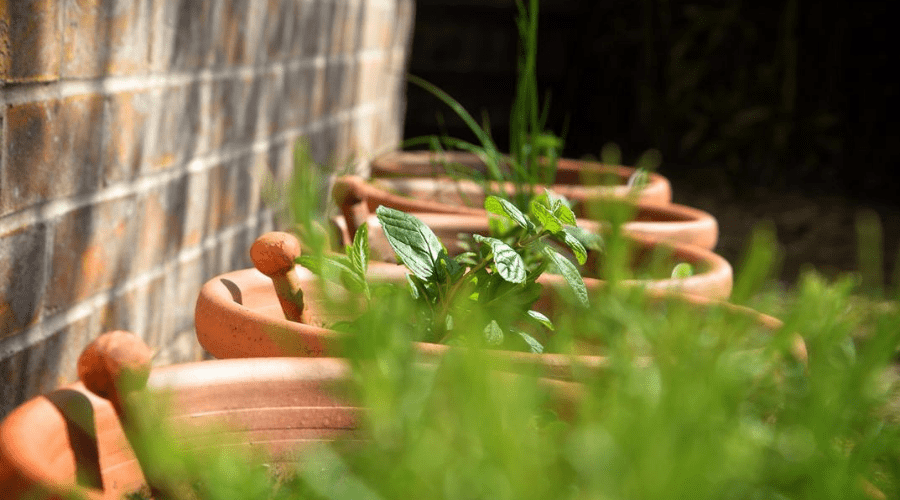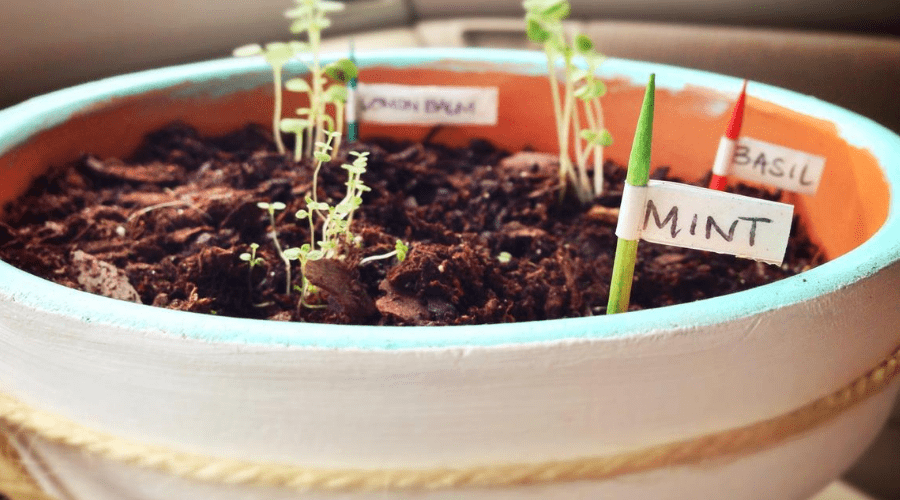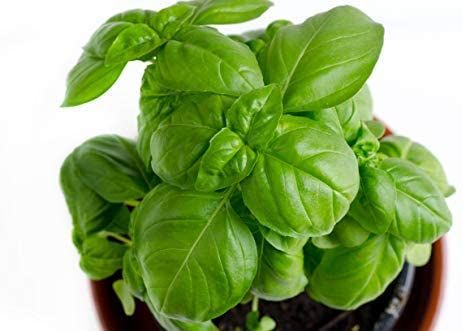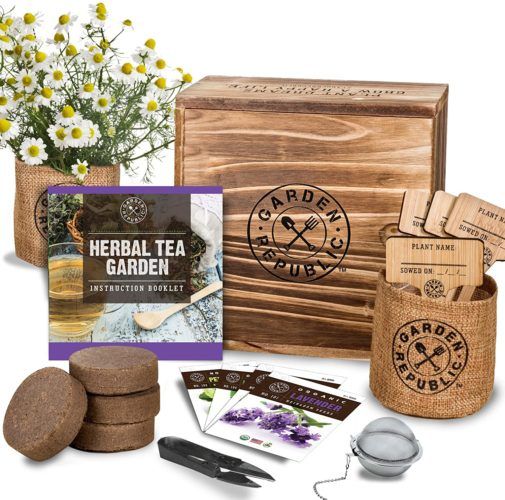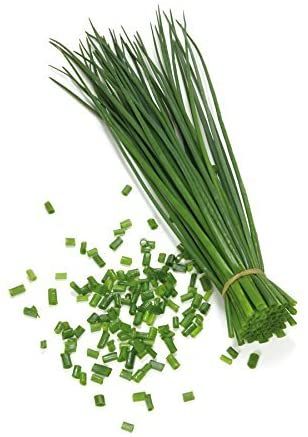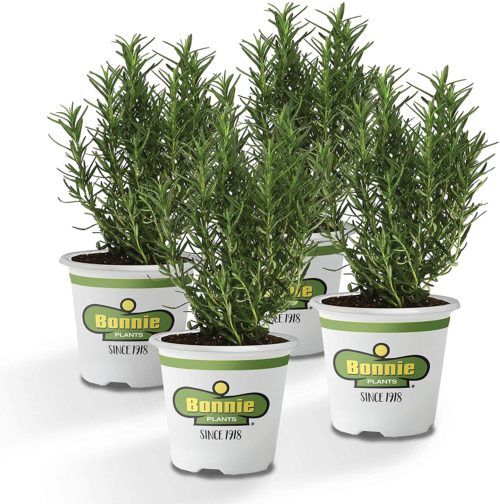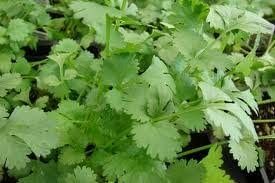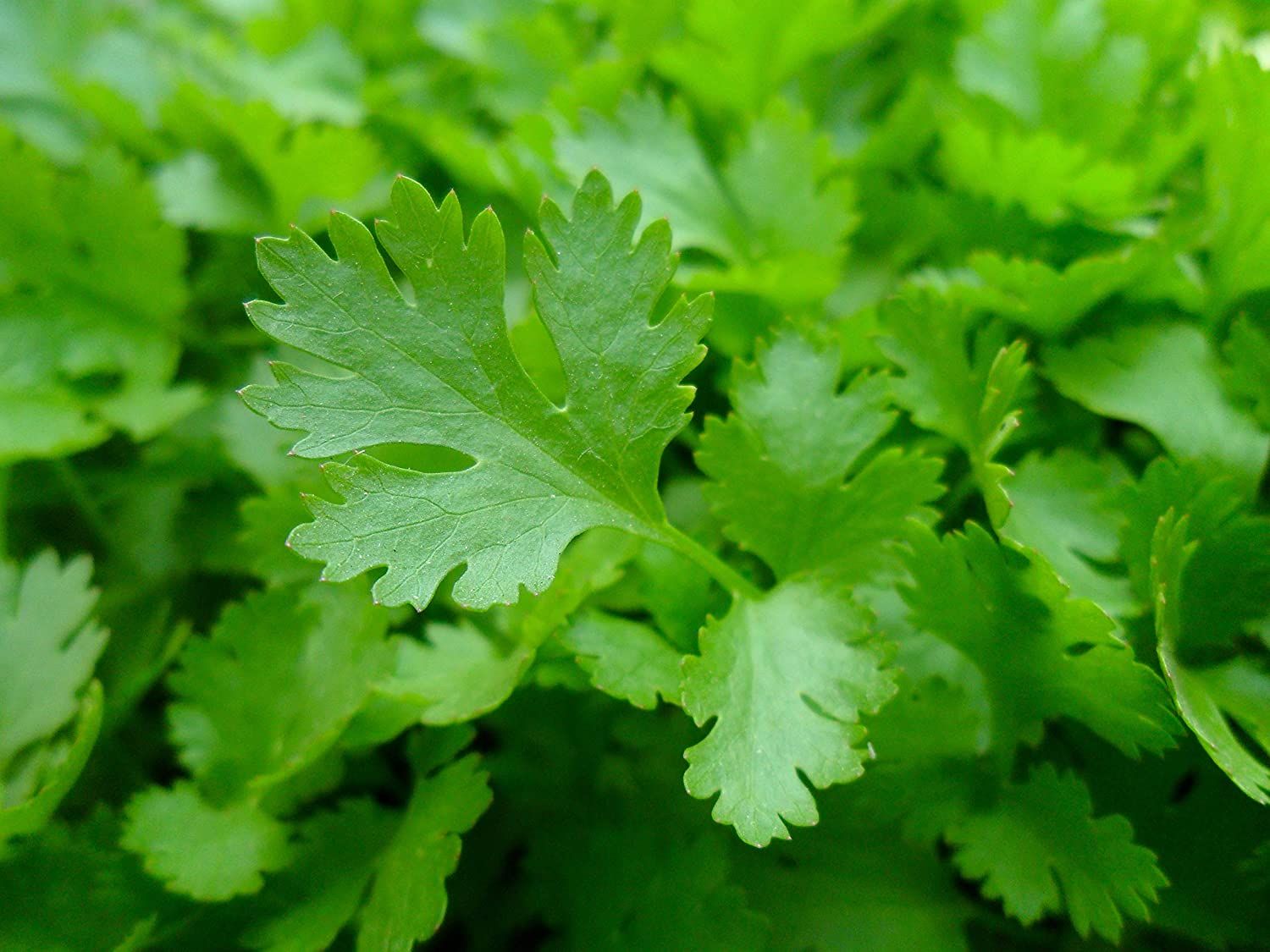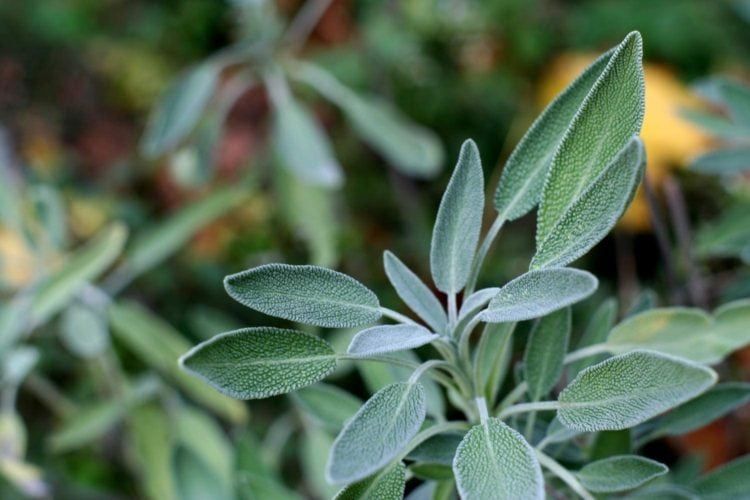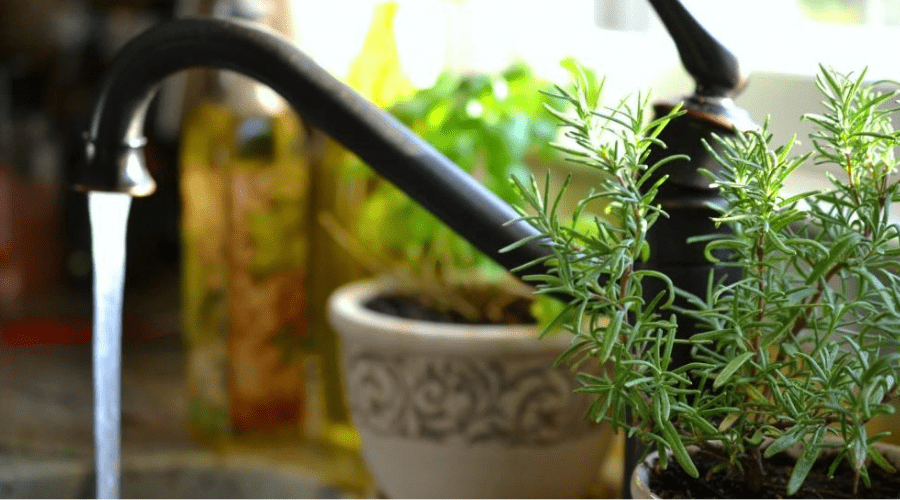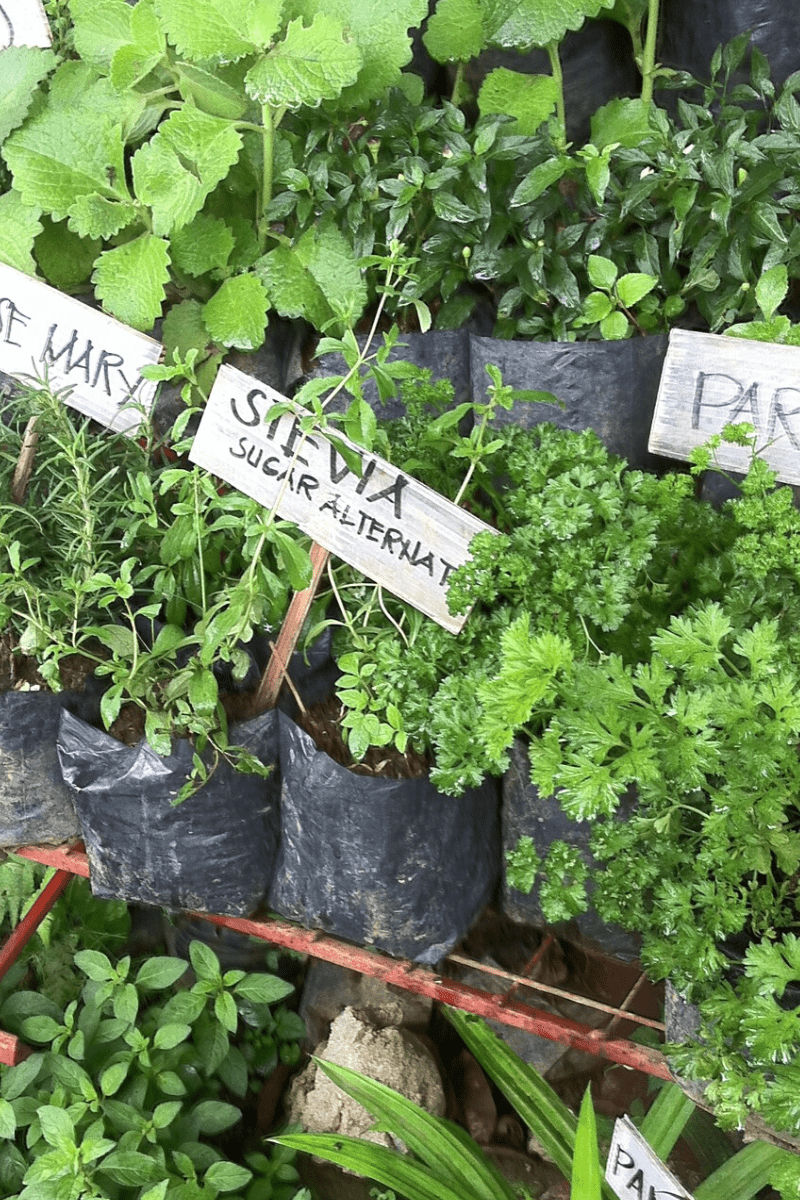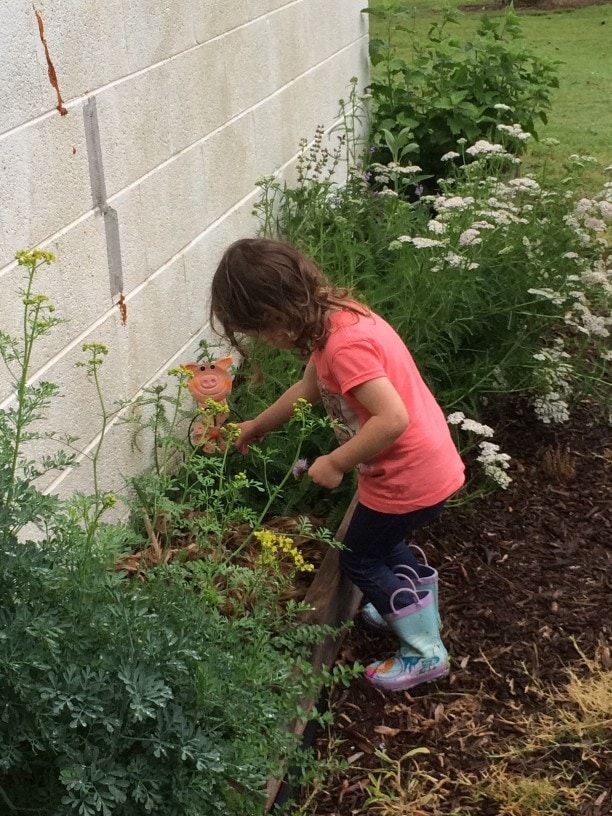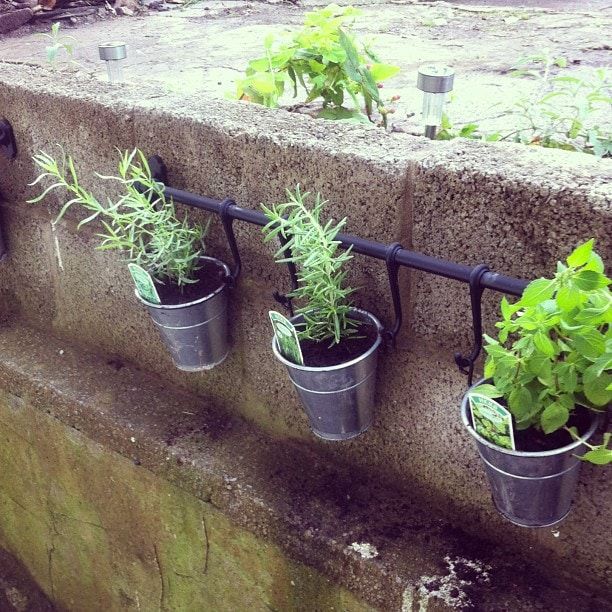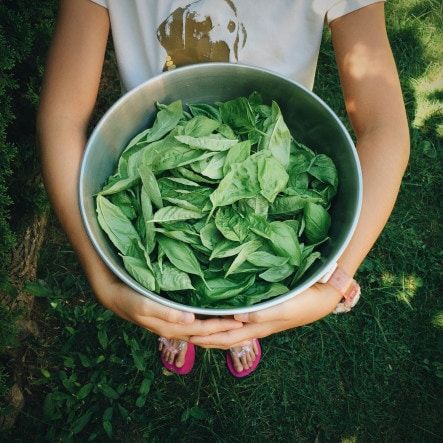Herbs are one of the most useful things you can grow. They make pastas more perfect, beverages better, and dips more delicious. These powerful plants have countless uses, but only a few maintenance requirements for growing, making them the perfect plants for beginners.
This complete guide covers how to start an herb garden, addressing herb varieties, herb care, where you could start your garden, and more!
Supplies You'll Need
- Herb Seeds or Plants
- Soil
- Water
- Fertilizer
- Common Gardening Tools
- Containers (optional)
Select Herbs for Your Garden
The hardest part about starting an herb garden is choosing which plants you want to grow. There are so many wonderful, delicious herbs it can be hard to decide. To make the decision process easier below are descriptions of what I consider the 7 best herbs to grow in your garden.
Basil
Basil is an extremely useful herb to grow, enhancing so many wonderful recipes, from pasta to pizza to salad to soups, almost everything can benefit from a little basil.
Because of this, it’s one of the most widely grown and sold herbs. It can be grown indoors anywhere, and outdoors in most places in the summer. It dislikes cold weather so if you live in a place with harsh winters and grow it outdoors you may have to move it inside when temperatures plummet.
RDR Seeds 150 Sweet Basil Seeds
Basil does well in containers so it can be grown indoors during winter if it's too cold outside for a garden. Great companion plant for tomatoes. WARNING: Use of this herb may result in friends and family stopping by unannounced for dinner.
Plant basil in a spot with lots of bright, direct light and it will be happy. It’s easy to grow basil from seed or from a plant, so you can choose either of those options.
Provide it with warmth, light, and fertile soil and you will have little trouble caring for your basil.
Mint
There is nothing quite like a cup of mint tea to help you relax. This hardy, helpful herb not only has a delicious taste but also medicinal benefits. It can relieve digestive issues, treat headaches, and provide congestion relief. It does it all, but you don’t have to do a lot for it.
Growing mint is fairly straightforward. As long as you provide it with a minimal amount of care, giving it fertile soil and lots of sunlight, this perennial’s lovely light purple blossoms will reappear year after year.
Indoor Herb Garden Seed Starter Kit
Heirloom, Non GMO Herb seeds for growing tea plants & making your own chamomile tea, mint tea, lavender herbal tea & lemon herbal tea. 4 attractive burlap grow bags / plant pots, peat potting soil discs, pruning shears, stainless steel tea infuser, bamboo plant markers, wooden gift box, instructions
Mint is so hardy that it can sometimes cross the line into invasive, taking over your garden space. To prevent this from happening grow it in a container so its spread-out space is limited. You can then let it go wild and don’t worry about winter weather; mint is surprisingly frost-resistant.
Once you start growing it you can harvest it for use in desserts, sauces, salads, and herbal teas. The options are endless when it comes to this refreshing, delicious herb.
Chives
Chives are an incredible plant to grow, with pretty, purple blossoms, and a resilience that makes them easy to manage. To top it all off they are a delicious topping, adding a light onion flavor to potatoes, soups, salads, and omelets, to name a few dishes.
They are not only versatile in what foods they can complement, but also in what parts of them can be used. You can eat the flowers, bulbs, and leaves of chives.
1000+ Premium Heirloom Chives Seeds
A must for your home Herb Garden! Grows 6-12 tall and has a mild onion flavor. Grass-like bunches of hollow leaves grow back quickly after being cut. Chopped leaves make an attractive garnish.
Growing-wise, chives are simple in their demands. They just need fertile soil, at least 4 hours of sunlight a day, regular waterings, and space to spread out.
If you grow your chives outside you can leave them out for the winter but you must cut the plants down to the ground after the first fall frost to preserve them. Don’t worry, your new favorite garnish will reemerge in the spring.
Rosemary
The white, pink, blue, and purple blooms of rosemary are gorgeous, but it’s not just a pretty flower. It produces versatile leaves that not only can improve your memory retention but also jazz up some classic dishes. This fragrant evergreen plant produces leaves all year so you can continually harvest it for use in meats, stuffings, bread, pastries, and other delicious foods.
Rosemary Aromatic Herb Plant-4 Pack
Fresh herbs are expensive to purchase at the grocery or market, yet economical to grow at home. Try planting herbs in strawberry pots with multiple openings, as the border in a flowerbed, or in small pots for a sunny windowsill garden.
Growing rosemary is fairly easy. Simply plant it in fertile, well-drained soil in a spot with lots of sunlight. Past that, provide a minimal amount of care and it’s drought-tolerant, pest-resistant structure should protect it from most harm.
It grows best outside in USDA Plant hardiness Zones 8 - 10 but can be grown elsewhere as an indoor plant. It’s extremely well-suited for container-growing.
Coriander
Coriander, also known as Chinese parsley, is cilantro’s seeds, which can make its growing strategy a little different than other herbs.
Slow-Bolting Cilantro Seeds
This long-standing variety bolts two weeks later than the common variety and therefore gives you a longer harvest of leaves. Well-suited for spring and fall plantings.
Because coriander is seeds, not leaves, to grow it you have to force cilantro plants to bolt. Pick out a variety that is prone to bolting and plant your cilantro plant in a place with bright sunlight and fertile soil. Bolting is typically triggered by hot weather so you will harvest most of your coriander in the spring and summer depending on where you live.
Once harvested, ground it up and add it to dishes as a spice. Coriander has an entrancing lemony taste that greatly compliments the Chinese and Thai cuisine it is most commonly used in. Add it to stir fry, curry, and even salsa. Get creative with your coriander!
Parsley
Parsley is one of the most popular herbs for cooking, adding a mild peppery taste to dishes that complements most savory meals. It’s an incredible addition to salads, pesto, soups, potatoes, and more. This gourmet garnish is a great way to upgrade your dishes. Add it to common cuisine to give it a fancy flare.
Sow Right Flat Leaf Parsley Seed
Fun and easy herb with tasty and attractive leaves that add a gourmet touch to dishes as both garnish and flavoring. Leaves may also be dried. A wonderful gift for the gourmet cook.
Grow it in fertile soil with full sunlight and water it regularly to help it flourish. It grows in the spring and summer but you can easily dry it and store it for use throughout the year. You can also choose to grow it indoors year-round in a container.
Sage
Sage is one of my absolute favorite herbs to grow and eat. Its savory, mildly peppery taste adds a noticeable oomph to dishes like roasted meat, grilled potatoes, baked rice, and more.
Not only is it delicious, it's also gorgeous, with beautiful textures leaves, and green, white, and purple coloring.
Sow Right Sage Seed
This hardy shrub-like perennial is a staple for a classic herb garden. There are many culinary uses for the flavorful dusty green leaves. Beautiful pink and white flowers in early spring.
This evergreen shrub is harvestable year-round, however, unlike other herbs, as Sage’s leaves grow bigger their flavor intensifies, so you should leave it growing if you want it to pack more of a punch. My sage wisdom is to plant it in full sunlight in well-drained soil and it will absolutely flourish.
Choose a Location for Your Herb Garden
Herbs are versatile plants that can be grown indoors or outdoors, in a garden or in a container, with the same high success rate. All they need is well-drained soil, some sunshine, regular waterings, and a bit of fertilizer and they are basically guaranteed to thrive. Below are descriptions of the different environments you can grow herbs in with specific growing instructions and pros and cons for each.
Indoor Herb Gardens
No garden or backyard? Live in a less than ideal climate for herb-growing? No worries, it’s extremely easy to create your own herb garden indoors. When growing indoors it’s a good idea to start with a few plants and build your way up to full-on collection. That way you can easily move the plants around to find the ideal spot in your house for them to grow.
Place them near a window, perhaps on a sunny windowsill. Your herbs should be exposed to at least 6 hours of sunlight a day. If you live in an area that can’t supply that, consider getting a grow light. Herbs that are not exposed to enough sunlight will start to lose their flavor.
Regularly rotate your herb container so that all sides of it have a chance to be exposed to sunlight. Otherwise, it will start growing in an odd way when the back leaves contort to try to get in on some sun-action.
You'll need to pick out containers for your herbs. Your container should have adequate drainage holes so that water doesn’t get trapped in the soil and cause root rot. Root rot is a serious disease that can kill plants, so it should be avoided at all costs.
To also prevent it, make sure that the potting mix you use is well-drained and well-aerated so the water can easily flow through it. Your potting mix should have organic material to make up for the nutrients your plant is missing out on by being grown inside. To also help with this, consider feeding your herbs a water-soluble fertilizer on a monthly basis.
If your home’s thermostat typically sits between 65 - 75 F, congratulations, that’s the perfect climate for growing herbs. To make it even better, provide your herbs with regular humidity either through weekly misting or a humidity tray.
Growing herbs indoors has the benefit of them being easily accessible for use in the kitchen. In fact, you can even grow them in your kitchen. How convenient is that?
The downside of growing them indoors, however, is that they are typically limited in how much they can grow, producing a smaller crop.
Container Herb Gardens
Nothing could contain my love for herbs, but if you aren’t growing in a garden, you do need to contain them.
Ideally, the container you choose for your herbs should be at least 8” in diameter, although I would go with a 12-inch container to really give them some room to grow.
It’s likely they will eventually outgrow their container because most herbs are hardy and have an impressively fast growth rate.
Your container should have excellent drainage holes whether you are growing the plants indoors or outdoors. It’s a good idea to get a saucer, or something similar to a saucer, to protect whatever your container may be sitting on.
Because herbs are so resilient you can really experiment with what kind of container you use. Try anything from a suitcase to a bike helmet. Get creative!
Outdoor Herb Gardens
Growing herbs outdoors can be easier than indoors since they are provided with nutrients from the ground, benefit from consistent rainfalls, and have easier access to sunlight, however, you do have to be in the right climate to grow them outdoors.
Herbs can thrive in USDA Plant Hardiness Zones 5 - 12, it really depends on the individual variety and their cold tolerance. It’s safe to say in general that herbs prefer areas with warmer temperatures and lots of sunlight.
When you plant your herbs outdoors make sure they are in a spot with full sun. However, if you live in an area with extremely hot summers they should be planted somewhere that receives full sun in the mornings and only filtered light in the afternoons. There is such thing as too much of a good thing when it comes to plants and the sun.
Backyard
If you plant herbs in your backyard garden, you get to benefit from all those incredible ground nutrients and outdoor rainfall.
When planting herbs keep in mind that some of them can really grow so they need an adequate amount of space around them. Fast growers like rosemary, sage, and mint need at least 3 - 4 feet around them so they can spread out without dominating other plants while cilantro, chives, and parsley only need about 1 foot.
Before you plant herbs in your garden dig through the soil, loosening it. Compact soil will prevent adequate water drainage and root growth. While sifting through add some compost to it to provide your plant with excellent nutrients right off the shovel.
Patio or Balcony
If you don’t have a garden you can easily grow herbs in a container on your patio or balcony.
The benefit of growing herbs in a container outdoors is that if your area has less than ideal winters for them you can easily move them inside. Also, you can adjust the amount of light they are getting outdoors by simply shifting their container, which means you can find the absolute ideal location for them. Of course, you still face all the difficulties of container gardening that were listed above.
Caring for Your Garden
Caring for herbs is easy as long as you provide them with a bit of fertilizer, regular waterings, and harvest them frequently. Below are some in-depth care instructions for taking care of your herb garden.
Fertilizing Herbs
Herbs are pretty low-key plants so they really do not require a lot of fertilizer. In fact, if you overfertilize them they will produce too many leaves, leading to much less concentrated flavor in the leaves. Use organic fertilizers, like compost, at the beginning of the growing season. For most herbs that will be enough fertilization to last them for the year, however, if you believe that your plants need more you can feed them a diluted fish emulsion solution every couple of weeks.
Watering Herbs
After you plant your herbs water them thoroughly.
Your indoor herb plants need to be watered regularly since they are missing out on rainwater. Do not allow the soil to ever fully dry out but also never leave standing water on your herb’s soil. I know that seems like a delicate line to walk. A great way to see if your herbs need watering is sticking your finger in the soil, if the top feels dry, water them.
Your outdoor plants might be able to make do if they get enough rainwater but if you live in a climate that doesn’t get a lot of rain you will need to supply them with supplemental water. The ground around them should not dry out, if it does, water them.
Harvesting Herbs
Harvest your herbs frequently. Frequent harvesting has two benefits: one is that you get to enjoy your delicious home-grown herbs and another is that it encourages the plant to grow more.
When harvesting cut close to leaf intersections. This will help your plant grow back quickly. Remove old branches before tiny branches, giving them a chance to fully mature.
If your herb variety doesn’t grow year-round its a good idea to dry some so you can use them in the colder months.
Conclusion
Herbs are extremely easy to grow so they are an awesome plant for beginner gardeners to start with! They are incredibly useful, providing loads of medicinal benefits and versatile uses in cooking. There is nothing like fresh herbs to spice up dishes!
Once you have built-up your confidence growing herbs, try taking on other gardening projects like creating your own aerogarden.
If you enjoyed this guide, be sure to share it and comment below to let me know which herbs you decided to grow!

